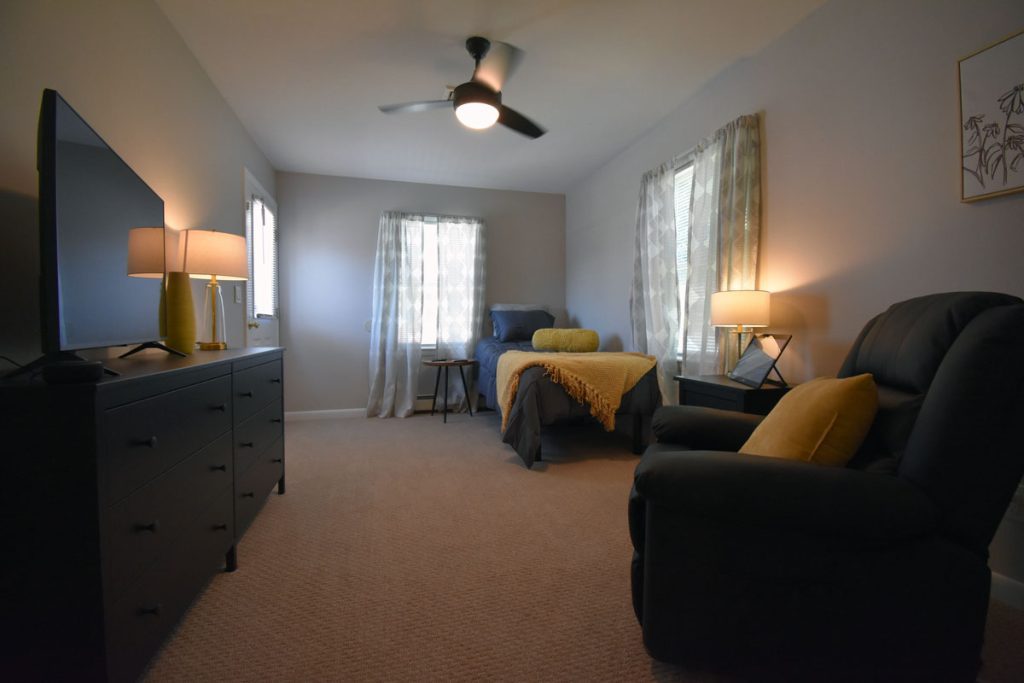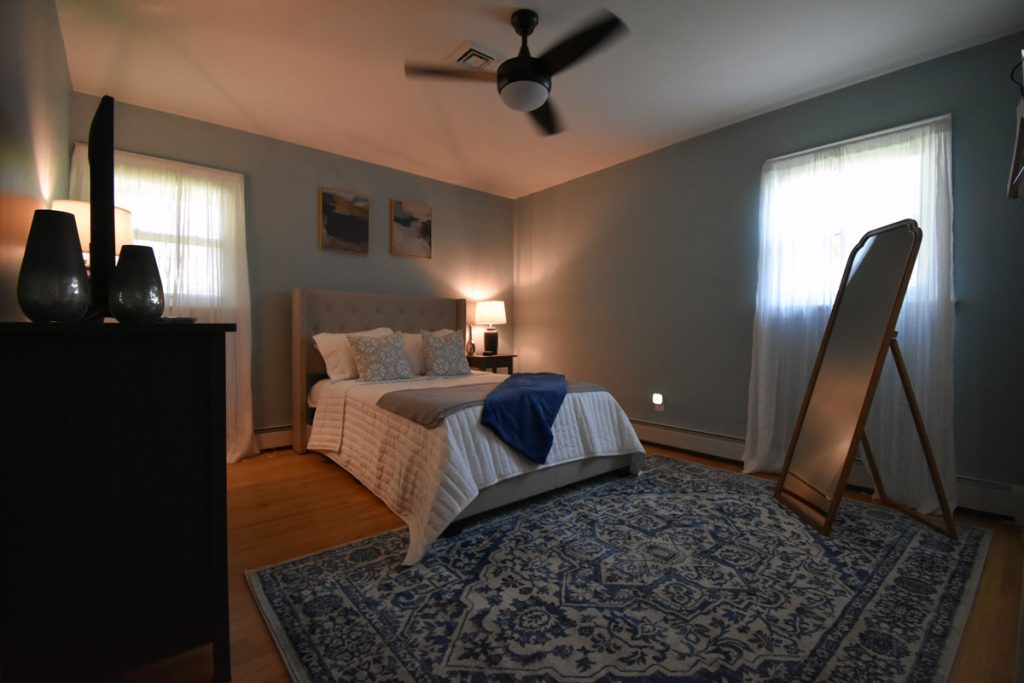Creating Independence With The Smarter Living Home
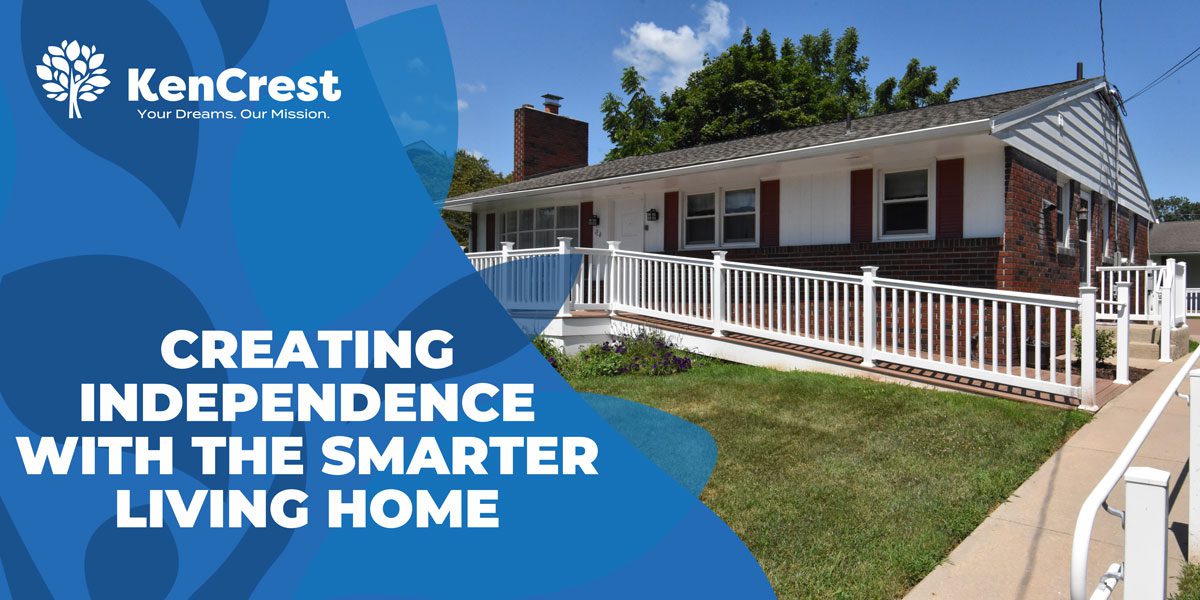
KenCrest’s Smarter Living Home, with its assistive technology, helps people with intellectual disabilities achieve greater independence.
By Sydney Kerelo
Situated on a quaint street in Pottstown, PA, sits a charming ranch-style house with red brick, shutters, and a newly installed ramp for wheelchair users. But what looks like a cozy private residence is KenCrest’s Smarter Living Home.
Originally used as a group home years ago, this Pottstown house sat vacant before Director of Operational Supports, Kellie Smith and Director of Infrastructure & Security, Tim Bosch decided to use it for a different purpose: as a Smarter Living Home that demos various Enabling Technology devices to help those with disabilities live more independently.
The idea sprung in 2019 when Smith assessed the Agency’s various community residences. She spoke with one woman KenCrest supports who was having difficulty turning her lights on and off but still wanted the ability to live alone. So, Smith pulled in Bosch to install assistive technology devices like Amazon Alexa that would allow her to turn off her lights with a command.

The Smarter Living Home's kitchen // Photos by Aubrey Hoffert
From there, Smith and Bosch realized they could help others live independently by showing them different assistive technologies. That same year, Bosch and Smith submitted a proposal to KenCrest’s New Business Ideas (NBI) initiative—a KenCrest-launched grant opportunity that develops new models and products to benefit stakeholders and programs—to create a model Smarter Living Home with all available technology devices clients can install into their homes.
“We were the recipient of the first round of NBI funding and were able to use that money to not only include tech into the home but also add a lot of accessibility features like having ADA compliant countertops, open kitchen shelving instead of cabinets because not everyone can open a cabinet,” says Smith. “We did a drawer dishwasher instead of your traditional drop-down, and all the kitchen appliances are smart and accessible through an app.”
The bathrooms even have accessibility features, like tilt mirrors, hand-censored faucets, smart toothbrushes, and more. There is even a combination washer-dryer unit for easy access. All the furniture has rounded edges so that if a fall occurs, that individual won’t injure themselves. Plus, Smith even had the idea to use an IKEA standing desk as a kitchen table so wheelchair users can roll under the table while eating.

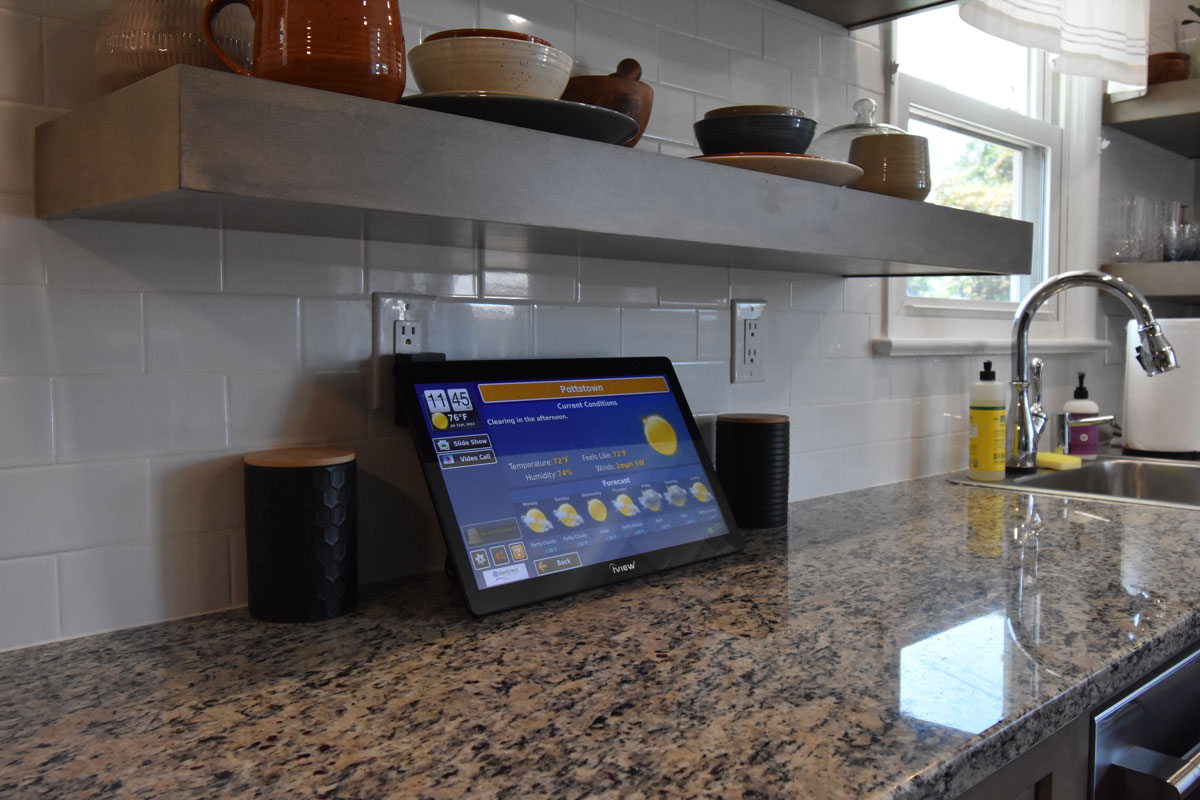
The Care Tablet set up on the kitchen counter // Photos by Aubrey Hoffert
But that isn’t the only thing fascinating about this home. There are numerous Care Tablets in the main living area and bedrooms that provide the ability to do health monitoring with a blood pressure cuff, a thermometer; and the ability to create tasks, reminders, and guided prompts.
Each room has several pieces of assistive technology, including several Amazon Alexa–configured devices, that allow individuals to ask for help filling up the coffee pot, changing the house temperature, turning on the oven, or even opening or closing the blinds.
“Kellie has a phrase she uses for the blinds; she’ll say, ‘Alexa, Here comes the sun,’ and the curtains in the living room automatically open,” says Bosch. “Almost everything in the house is kind of off-the-shelf technology anyone can access.”
But there is one device more advanced than the rest. While searching for enabling technology devices, Smith discovered the Amazon Astro, a household robot that uses Amazon Alexa technology and intelligent motion to monitor the home. Using navigation technology, Astro determines the layout of the house and can navigate it on its own, and can be remotely sent to specific rooms, people, or things throughout the house.

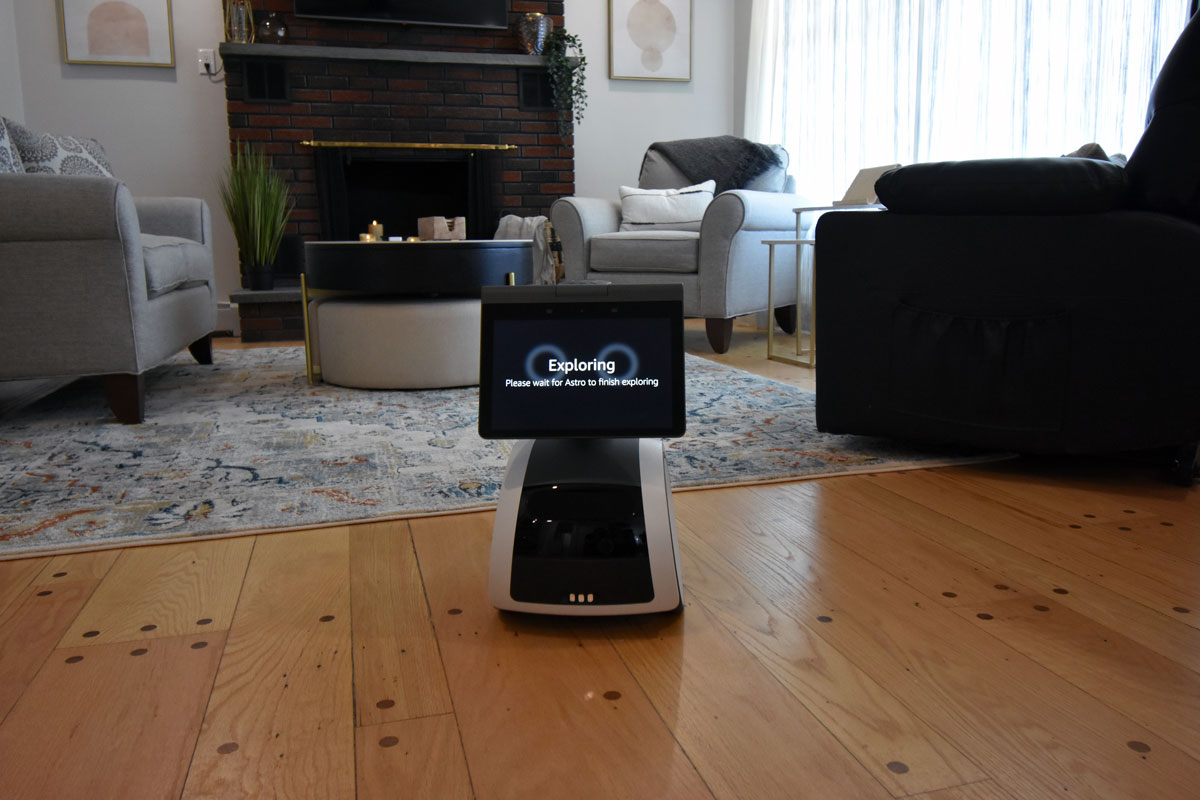
The Amazon Astro robot exploring the Smarter Living home // Photo by Aubrey Hoffert
According to Smith, while trialing Astro, the robot learned her children’s faces, voices, and names. So, when they were home without her, she could ask Astro to find them, which would do precisely that. Users can even remote into the robot if there is an emergency and check if the doors are locked or the stove is off.
Smith and Bosch originally wanted to create the Smart House to introduce those with disabilities to different enabling technology devices to help them live independently. Previously consumers would visit private homes in other agencies to see assistive technology devices in action. Still, Smith noticed how those individuals lacked privacy because visitors constantly came in and out of their homes.
So, with the KenCrest Smarter Living Home, she wanted to create a space that wasn’t occupied, where people could go for a few days to test out technology without having their privacy invaded.
Two bedrooms in the Smarter Living home // Photos by Aubrey Hoffert
“There are many discussions and plans for the home moving forward,” says Gregg Kelinson, the Assistant Vice President of Innovation at KenCrest. “These consist of, but are not limited to, individuals using the home for alone time and demonstrations of independence while remaining safe with remote monitoring support. We hope to educate the community and stakeholders about how Smarter Living Home devices and remote supports help individuals make dreams possible.”
The Smarter Living Home will even house KenCrest’s Enabling Technologies lending library, allowing the Organization to conduct onsite assessments and hold technology tools for people to take and trial before purchasing.

